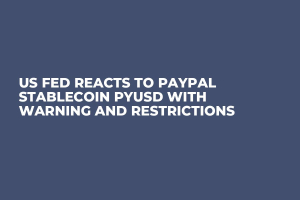
Disclaimer: The opinions expressed by our writers are their own and do not represent the views of U.Today. The financial and market information provided on U.Today is intended for informational purposes only. U.Today is not liable for any financial losses incurred while trading cryptocurrencies. Conduct your own research by contacting financial experts before making any investment decisions. We believe that all content is accurate as of the date of publication, but certain offers mentioned may no longer be available.
PayPal, a forerunner in the digital payments sector, is charting its own path with its stablecoin, PYUSD, as it appears to be embracing a unique revenue model distinct from its competitors. According to a recent report by Bloomberg, PayPal's approach to revenue generation is set to differentiate it from other major stablecoin players.
Traditionally, popular stablecoins like USDC and USDT have largely relied on interest income from the assets that back the stablecoin. These assets predominantly include U.S. dollar deposits and short-term treasury bonds. This mechanism has proven to be a reliable and lucrative source of income for these businesses. Yet, in an unexpected move, PayPal's PYUSD is sidestepping this convention.
Instead of relying on interest from backing assets, PayPal aims to leverage its new stablecoin directly within payment transactions to generate revenue. This shift signifies a fundamental change in strategy. By doing so, PayPal seems to be banking on the increased adoption and usage of PYUSD within its vast ecosystem of merchants and consumers.
But will this move work for PayPal? Let's delve into the analysis.
First, PayPal's vast network is its major strength. With millions of merchants and users globally, the company already possesses an established infrastructure for PYUSD's deployment and adoption.
Second, by focusing on transactional revenue rather than interest from backing assets, PayPal might be avoiding potential regulatory pitfalls and scrutiny, especially considering the global call for clearer regulations on cryptocurrencies and their derivatives.
However, the success of this strategy largely hinges on the adoption rate of PYUSD. If consumers and merchants do not see distinct advantages in using PYUSD over traditional payment methods or even other cryptocurrencies, then adoption might be slower than anticipated.


 U.Today Editorial Team
U.Today Editorial Team Gamza Khanzadaev
Gamza Khanzadaev Arman Shirinyan
Arman Shirinyan Alex Dovbnya
Alex Dovbnya